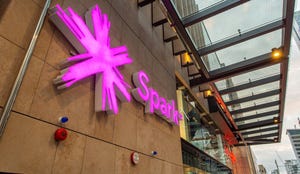India's Still Hot for WiMax, Says Forum
WiMax vendors are still bullish about the Indian market, but the window of opportunity might be short
July 6, 2010

NEW DELHI -- Battling against a groundswell of support for TD-Long Term Evolution (LTE) as the wireless broadband technology of choice, India's WiMax community is still bullish about its market opportunities, with some vendors talking of widespread trials and carrier support among the country's new spectrum owners.
Vendors such as Alvarion Technologies Ltd. (Nasdaq: ALVR), Motorola Inc. (NYSE: MOT), and Samsung Corp. , who stated their case at a press briefing here in the Indian capital today, realize they have a battle on their hands to win initial WiMax purchase orders and long-term commitments from the operators that were awarded BWA (Broadband Wireless Access) spectrum in the recent auction. (See India's BWA Auction Ends in $8.2B Drama.)
That's because there is now another technology that can be deployed in the 2.3GHz band, and it's one that has a lot of heavyweight supporters. (See Ericsson Shows Off TD LTE in India, BWA Auction Is Bad News for WiMax's Future , India's Billion-Dollar LTE Question, and Qualcomm Unveils LTE Plans for India.)
But as the likes of C.S. Rao, chairman of the WiMAX Forum 's India branch, point out, WiMax has a number of immediate advantages over TD-LTE. WiMax infrastructure is available and affordable now, with a supporting range of devices and handsets. Meanwhile, even LTE's supporters admit it will be at least two years, if not longer, before a TD-LTE technology ecosystem is commercially available.
That availability is relevant, as India's BWA spectrum owners have already paid a lot for their capacity slots and need to start building a network and launching broadband access services as soon as possible to get a return on their investment.
"We have interacted with all the winners of the BWA auction... They recognize that WiMax has a three-year advantage over other technologies," and that it has a standards-based migration path to next-generation technology (WiMax 2, or 802.16m) that can deliver even greater bandwidth, noted Rao. (See WiMax vs. LTE: The Rematch, CommunicAsia 2010: Two Techs Set for 4G OK, and Samsung Targets WiMax 2 in 2011.)
"All the operators have said that if they want commercial service in 2010 or 2011 [using BWA spectrum], then WiMax is what they need," added Rao. "The lobby for the other side is making a lot of noise, but the operators know which technology is available today. They will not be swayed by the lobby," he added.
Alvarion says all the BWA spectrum owners (with the exception of Qualcomm Inc. (Nasdaq: QCOM), which is on an unshakable path to deploy TD-LTE) are testing or trialing its WiMax gear with a view to a potential deployment.
But despite all the bravado, Rao couldn't identify any Indian operators that had made an absolute commitment to deploying WiMax for broadband wireless access services.
And that's because it seems the introduction of TD-LTE as a technology option has given them a lot to think about.
The operators are agreed on one thing, it seems -- that decisions about how to use the BWA spectrum need to be made very soon, within weeks or months at most.
And following various discussions during the past few days with BWA spectrum owners here in India, it seems the preferred path, even for a company such as Reliance Industries Ltd. (RIL) that has stated its long-term commitment to LTE, will be to deploy WiMax initially, but then, instead of evolving to WiMax 2, migrate to LTE, once the technology ecosystem is in place. (See RIL Takes Over Infotel.)
That's a strategy fraught with potential complications, however. Even though vendors such as Motorola say that switching from one to the other is relatively painless -- both technologies are housed on the same physical platform and use the same radio frequency equipment, therefore a minor upgrade to the baseband technology is all that's needed -- there is the serious matter of growing a customer base that uses devices based on one technology, and then introducing a network technology that's not supported by the installed base of customer devices.
These are the tricky issues being debated and considered by a number of Indian operators, and ones that are due to be aired and discussed further in New Delhi this week. (See Top Indian Operators Set Out Broadband Agenda.)
— Ray Le Maistre, International Managing Editor, Light Reading
You May Also Like










